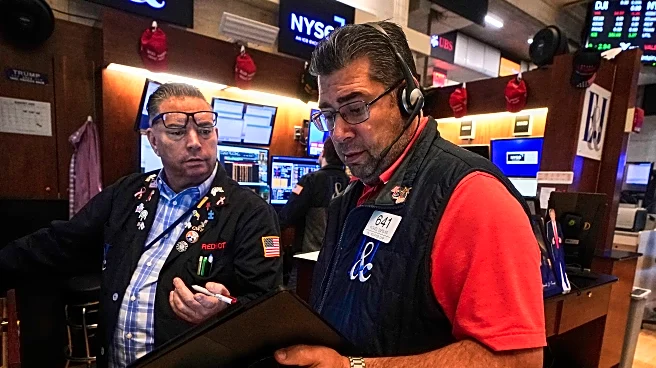What's Happening?
Federal Reserve Chair Jerome Powell is set to deliver a significant speech at the Jackson Hole Economic Policy Symposium in Wyoming. This event is crucial as it provides insights into the Federal Reserve's approach to monetary policy, particularly regarding interest rates. Powell's speech comes at a time of economic uncertainty, marked by a weakening labor market and the impact of President Trump's trade policies. Investors are keenly awaiting Powell's remarks, which could signal potential interest rate cuts, especially after recent dissent within the Federal Reserve regarding monetary policy decisions.
Why It's Important?
Powell's speech is pivotal for financial markets and economic stakeholders, as it may influence expectations for future interest rate adjustments. A potential rate cut could stimulate economic activity but also reflects concerns about economic slowdown. The speech is also significant due to ongoing tensions between Powell and President Trump, who has criticized the Fed's interest rate policies. The outcome of Powell's address could affect investor confidence and market stability, impacting sectors reliant on borrowing costs, such as housing and consumer spending.
What's Next?
Following Powell's speech, market participants will closely analyze his comments for indications of the Federal Reserve's future actions. The Fed's decision-making process will be scrutinized, especially in light of recent economic data and internal dissent. Potential reactions from political leaders and economic analysts are expected, as they assess the implications of Powell's stance on interest rates and broader monetary policy. The symposium will continue to be a focal point for discussions on global economic strategies.
Beyond the Headlines
The Jackson Hole Symposium serves as a platform for central bankers to discuss long-term monetary policy frameworks. Powell's speech may address the Fed's strategic approach to balancing economic growth with inflation control. The event highlights the challenges faced by central banks in navigating complex economic landscapes, influenced by geopolitical factors and domestic policy pressures.













